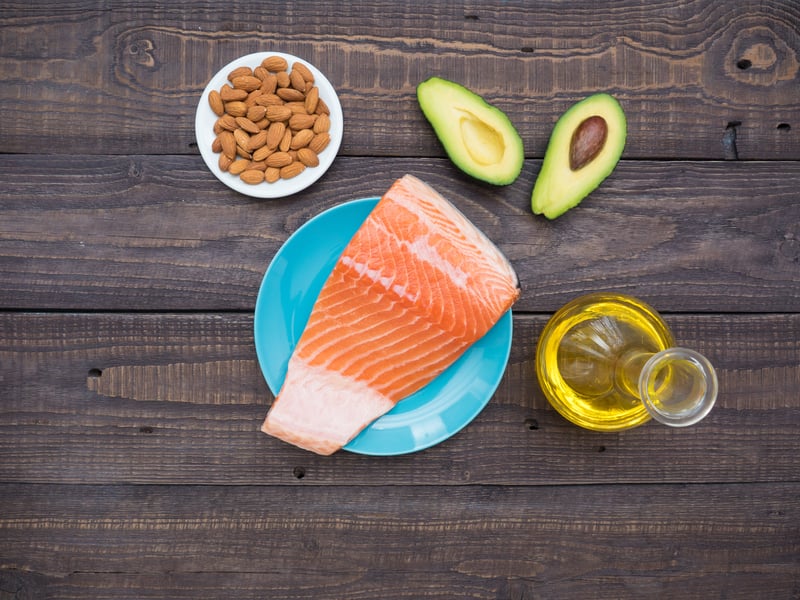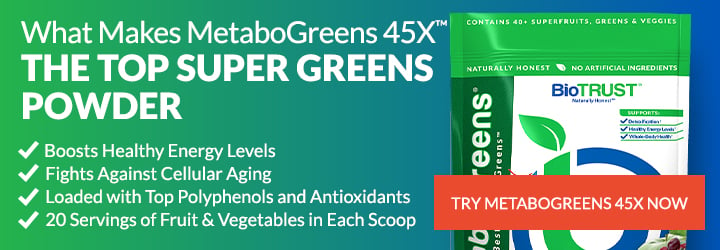What Are Free Radicals? (Plus, the Top 18 Antioxidant Foods)

Let me ask you a question: How old do you look and feel? Older than you’d like? Let me ask you a follow-up question: How old would you like to look and feel? Younger than your age—by a couple of years… or decades? One of the keys to healthy aging is to ensure you’re eating antioxidant foods.
Why?
It starts with free radicals. In the simplest terms, free radicals are unstable atoms that cause damage to cells, leading to aging and illness. What makes a free radical “unstable”? It means they are atoms with an unpaired electron, and because electrons like to be in pairs, free radicals scavenge the body to seek out the needed electron.
While free radicals are typically considered a nasty word, they are natural byproducts of chemical processes, such as aerobic metabolism. In other words, when our body uses oxygen to create energy, it results in the production of free radicals.
In fact, free radicals are essential to life. However, when our bodies are exposed to excessive amounts of free radicals that exceed our natural ability to quench them, we experience oxidative stress.
Lifestyle choices can increase our exposure to free radicals and subsequent oxidative stress, which can potentially lead to accelerated aging. These include:
- Exposure to toxic chemicals including air pollution and pesticides
- Smoking
- Alcohol consumption
- Eating fried foods
This stress may damage cells and lead to a range of illnesses and cause the body to age—looking more wrinkled, causing grey hairs, increasing hair loss, etc. In addition, the body is less able to fight the effects of these free radicals, and that may lead to even more signs of aging. Studies have shown that untamed free radicals may lead to an increased risk of:
- Heart disease
- Macular degeneration and cataracts
- DNA damage and cancer
- Central nervous system disorders (e.g., dementia and Alzheimer’s)
- Autoimmune disorders
- Rheumatoid arthritis 1,2,3
Aging is both a healthy and natural part of life—and we’re better off having a pro-aging attitude over fearing the aging process. Of course, that does not mean shrugging it off, having another shot or cigarette, and letting “nature take its course.” Interestingly, the more accepting we are of our natural aging, the more likely we are to take better care of ourselves, which actually slows aging.
And fortunately, our bodies are equipped with several mechanisms to help combat excessive levels of free radicals and support the delicate balance between beneficial and harmful effects caused by them (called our “redox status”). This is where antioxidants, which are substances that inhibit oxidation, have a profound role. Antioxidants can be produced within the body, and in order to maintain optimal levels of supportive antioxidants and cofactors, we need to make sure we’re making the right nutrition choices.
How Do Antioxidant Foods Help?
Antioxidants help prevent the oxidation of molecules by donating electrons to free radicals, reducing their reactivity, and helping neutralize them. Research indicates that consuming antioxidant foods may help:
- Slow the signs of aging
- Support more youthful, glowing skin
- Support detoxification
- Enhance lifespan
- Protect against disease
- Support brain health
- Support vision 4,5,6
Some of the most common antioxidants found in foods include glutathione, vitamin C, vitamin E, beta-carotene, lycopene, and phytochemicals, such as polyphenols, which are becoming one of the most touted and heavily-studied compounds in nutrition. Antioxidant foods7 that can help fight free radicals include:
- Blueberries, especially wild berries
- Grapes, especially dark-colored ones
- Red berries (strawberries, goji berries, raspberries)
- Elderberries
- Cranberries
- Blackberries
- Dark green vegetables (kale, spinach, cilantro, broccoli)
- Artichokes
- Orange vegetables (sweet potatoes, yams, carrots, and others)
- Red or purple cabbage
- Beets
- Tomatoes
- Nuts (especially pecans)
- Beans
- Pumpkin seeds
- Fish
- Dark chocolate
- Green tea
In summary, antioxidants and their ability to fight off potentially dangerous free radicals add one more great reason to ensure you’re consuming plenty of colorful vegetables, fruits, and other whole plant-based foods.







